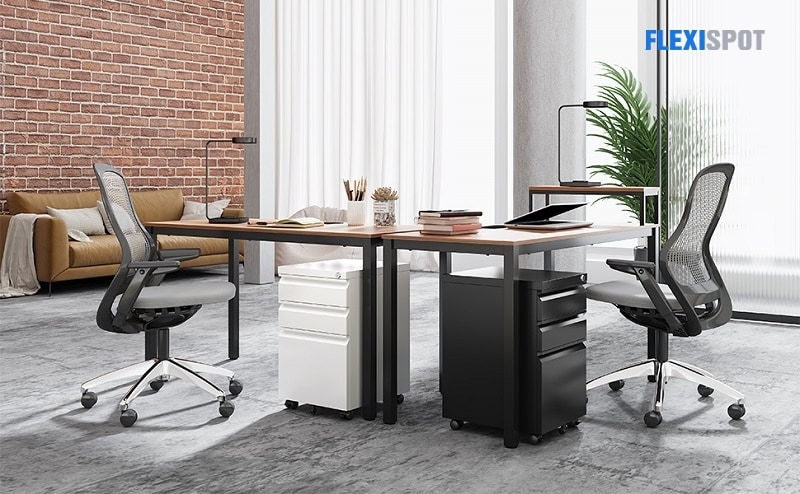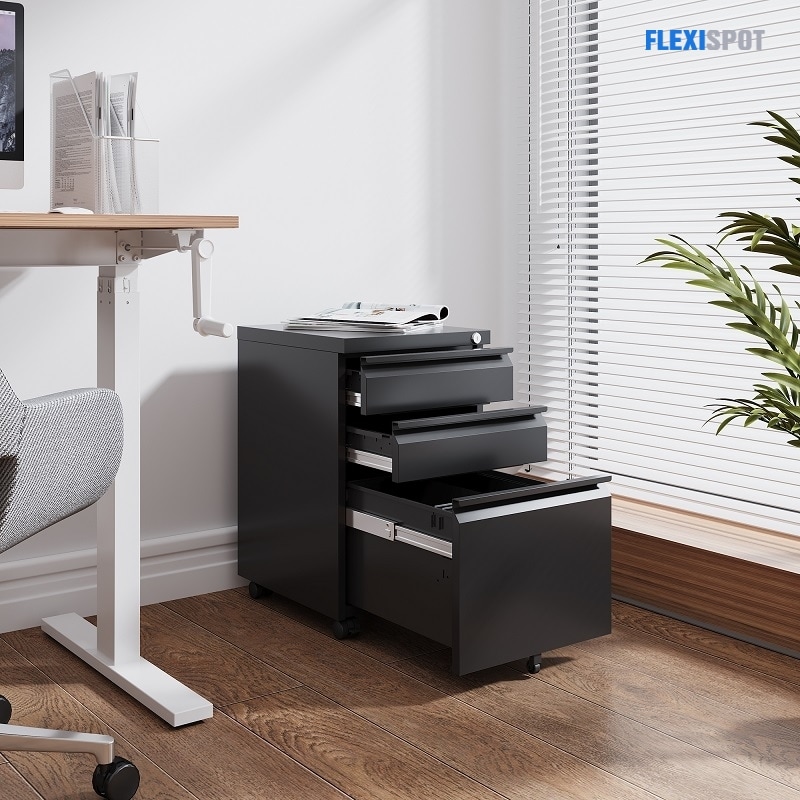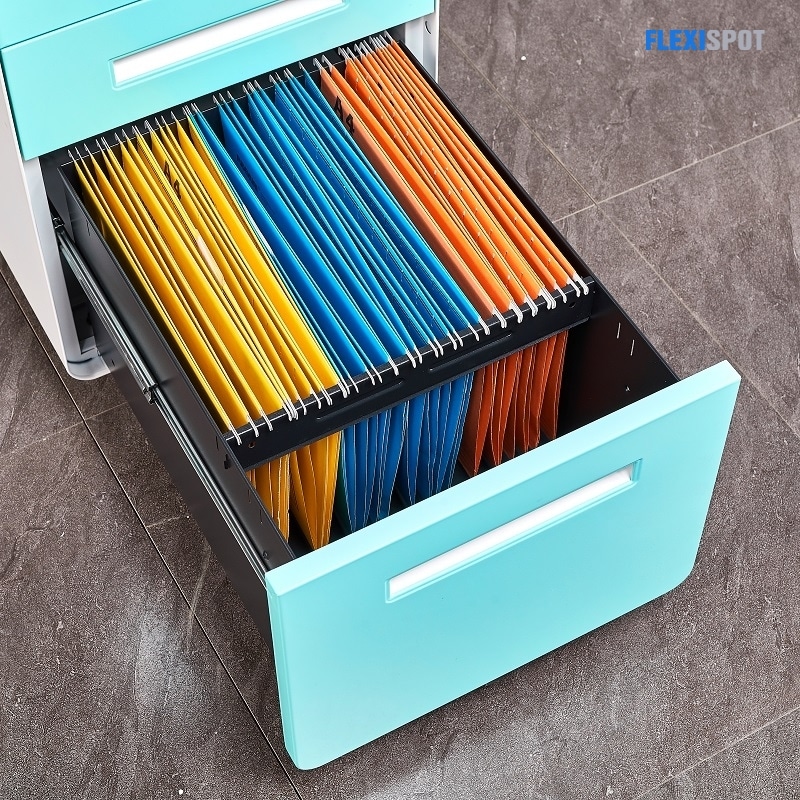Organizing a filing cabinet is an essential organizational task. You gather your paperwork, arrange them in manila folders, slip the folders into hanging files, and finally store everything in your filing cabinet. There's much more to filing cabinet organization than you might believe. You're not just arranging files for the sake of organizing them; you're structuring them so that you can refer to them later. Home file systems might be time-consuming to establish, but they will transform your life after you have them in place. Never again will you wonder where you left your marriage certificate or the warranty on your oven.
Types of Filing Cabinets
First, according to build and file, let's explore the types of filing cabinets in the market.
Build
- Fireproof file cabinets are manufactured with carefully designed insulation that has been tested for long durations to resist fire damage. These cabinets would not only safeguard paperwork from fire, but they'll also protect them from water damage caused by workplace sprinklers.
- Metal file cabinets are the most sturdy alternative, as they are often composed of galvanized steel. This file is widely used in accounting departments and other parts of the workplace where data must be retained for long periods. While not the most elegant looking, Metal filing cabinets do come in a variety of colors that you may match to your workspace.
- Laminate filing cabinets are a cost-effective substitute to real wood and veneer filing cabinets, providing the appearance of real wood without the expensive price tag. A thin coating of natural wood is fused over a thicker layer of pressboard to create the wood veneer. This has a higher-end appearance than laminate but is less expensive than real wood furniture.
- Solid wood is of exceptional quality, but it sells at a hefty cost and is difficult to clean and preserve. Solid wood filing cabinets are available, however, they are scarce in an office setting.
File Type
- The wide but shallow drawers of lateral files are perfect for high-capacity filing.
- The drawers of vertical files are slender but deep. Vertical files retain lesser documents and are appropriate for everyday use at a private workspace.
- Mobile files are filing cabinets that can be moved around.
- Side tab files with doors that collapse back into storage are known as tambour door files.
- Storage islands are made up of a filing cabinet and/or storage cabinet combined with a counter-height work surface.
- Card files are used to store cards of a given size, such as index cards, in a front-to-back arrangement.
- Rotary files are intended to give you the most storage space while occupying the least amount of space on your workspace.
- Flat files are made out of short, broad drawers that are meant to contain huge plans and artwork.
What to Look for in Filing Cabinets
Cabinet Size
When it comes to size, consider how much storage space you need and how much you may need in the future. Examine your vertically vs. vertical space while deciding whether to extend or start with a high cabinet.
Lock
Consider whether or not you require a locking filing cabinet for your home or office. Although many cabinets have this capability, they may not be appropriate for domestic use. If you need a lockable filing cabinet, be sure that all drawers can be locked before purchasing.
Mobility
Most filing cabinets include wheels so they can be moved across your house or business with ease. Pick a good cabinet without casters if you won't have to remove it. It won't wobble on you.
Aesthetic
Consider the color, material, and style of the drawer handles. Choose a cabinet that complements your home's décor or integrates into the layout of your home office.
How to Organize
Setting up a home file system is challenging, but having a stack of paperwork clog your workspace is even more stressful. Poor filing systems — or, worse, no method at all — can cause you to become distracted and lose productivity. The truth is that you should handle these kinds of issues as soon as it starts to worry you, if not sooner.
Plan a Filing Method
This approach will keep your filing cabinet intact, and it will be how you organize and store your official documents. To manage your files, you must establish a dependable strategy and keep to it throughout the life of your filing cabinet. The main goal of structuring your filing cabinet is to store and find the files you need quickly and efficiently.
Make a List
Write down the names of the files you want to keep in your filing cabinet as they occur to you. You can use surrounding papers to assist you in determining the kinds of files you'd like to create if necessary.
Concise File Names
The contents of a file should be clearly described in the file name. You would like to view the file name and know what's within without trying to open the file and look through its contents. While a brilliantly titled file may appear entertaining at the moment, you may get bewildered or puzzled in a few months. Keep it basic and smart. You'll want to avoid producing identical file names and random file folders as you create your file names.
Gather Filing Needs
This entails selecting or purchasing the filing cabinet you'll need, as well as putting together supplies. If you want to make labels, you can use a label maker, but it's not required. Before buying something online or in a store, look around your house or office for what you already have.
Prepare Folders
Take some files and hanging folders and begin marking them as per the list(s) you made earlier. You can name files what you want: using a pencil makes it a lot easier to update or edit items while using a label maker makes everything look more cohesive.
Prepare Cabinet
Remove the stuff from your filing cabinet (if any) and lay them on a clean, level surface. When you're done with this process, you must have a number of empty files and directories prepared to receive forms and documents.
Slip Documents Into Folders
When putting papers into folders, they should be arranged in either chronological or reverse chronological order. This will make retrieving data much easier when you need it. You may need to spend some time sorting through papers, supplies, and documents to match like items with like, but your files' basic framework is already in place.
Set Up a System
To momentarily store paperwork, have a basket, box, or container beside your filing cabinet. Instead of filing items individually, you can file many items in one go.
Everything will run smoothly if you've mastered a reliable file system. The objective is to establish a system that is simple and consistent. After that, you must follow through. It doesn't matter how wonderful a system you design; if you're not using it, it won't help you.
You may check our filing cabinets that you can choose from by going to the FlexiSpot website. Kindly click here!


